The European Commission issued in early 2022 the new European development policy: the “European Chips Act“. Its objective is to solve the production problems and failures in the semiconductor commercial chain recorded by the European Union economy, from the deepening of technological research and internal productive capacity to decrease import dependency.
With the shortage of semiconductors worldwide during the COVID-19 pandemic, several countries have suffered from the spread of their dependence on Asian countries, such as South Korea and Taiwan, which produce about 83% of the microchips supplied in the world. From this, the countries are in a search for the strategic autonomy of other actors, based on the further internal productive development of microchips to achieve this change.
But semiconductors have another importance for the future of the global economy and can be considered the “new oil” commercially. Therefore, this search for a national production of microprocessors represents not only a liberation from the Asian monopoly, but also an increase of geopolitical power.
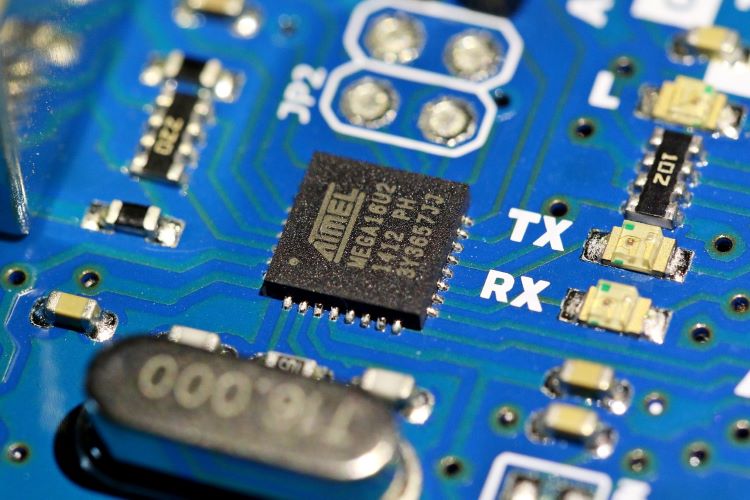
What is the “European Chips Act”
With the COVID-19 pandemic, the European Union has faced major shortages in its production chain, demonstrating the need to strengthen its domestic production of essential products to ensure greater sovereignty.
The growing demand for microchips has had a major impact because of the pandemic. The high use of virtual platforms boosted the growth of digital technology industries, which consequently drive semiconductor productions.
On 8 February 2022, the European Commission announced its economic and industrial plan “European Chips Act”. The main objective of this action is to double the European production of microchips by 2030, going from 9% of current global participation to 20%.
“Today, the Commission proposes a comprehensive set of measures to ensure the EU’s security of supply, resilience and technological leadership in semiconductor technologies and applications. The European Chips Act will bolster Europe’s competitiveness, resilience and help achieve both the digital and green transition.”
European Comission
In 2021, the Commission declared Europe’s entry into the “Digital Decade”, a strengthening of deep and cutting-edge technology research and production to become a more import-independent continent with a well-developed industry in up to 10 years. The European Chips Act is an action within this general objective.
The Act has three main spheres of action: the “Chips For Europe Initiative”, the “Chips Fund”, and the construction of coordination tools.
First, the “Chips For Europe Initiative” is a cooperation between public and private investment of about 11 billion euros (US$12.6bn) and another 15 billion coming from the private sector. Its operation takes place as a company, with the Chips Joint Undertaking, focused on development in research and innovation in technological development.
Already the “Chips Fund” is a mechanism to attract private capital to invest in Small and Medium Enterprises (SMEs), as technology startups, with support from the European Investment Bank Group. With about 2 billion euros, the search is for solutions to improve the industrial productivity of semiconductors.
The third sphere is a construction of market monitoring and coordination mechanisms. This is the creation of a system of coordination tools at the national level of the Member States, but also at the intergovernmental level of the European Union. In this way, a crisis management plan is created that can guarantee stability and security, with the advantage of knowledge and greater use of its commercial position in times of crisis.
In total, the Chips Act already exceeds 43 billion euros (about US$49.2bn) for the consolidation of the technological industry of artificial intelligence, electric cars and more advanced, data and cloud, space and military based on deepening semiconductor production.
What is the European Union’s quest for digital geopolitical sovereignty
In the semiconductor industry, the EU already has a small participation mainly in the component sector, research of technology and materials and equipment for large-scale production.
However, at times of interruption of the production chain, especially in crises, these areas of activity are not sufficient to ensure economic and technological stability, since they are extremely fragile.
The search for the strengthening of the European internal market has been a recent and general objective of the EU forming “European champions” in the production of advanced technology to decrease its dependence on exporting countries.
The pandemic and the global crisis of the production chain have shown the importance of technological advances and in-depth science research, as well as opening up the scarcity of European industry and the need to strengthen it, calling for more sovereignty to be created to end the EU’s market insecurity. The car companies, for example, recorded the loss of millions with a decrease in productivity of up to 1/3.
The Chips Act has objectives to change this scenario and prevent it from happening again, with the short-term goal of increasing resistance to times of crisis; in the medium term, help strengthen the industrial base to become a world leader in semiconductor production and thus more independent; and in the long term, the general objective, to invest in technological research to conquer the 21st century.
Digital sovereignty is not only about the self-sufficiency of production, but also about the solidification of the European Union throughout the supply chain, as a producer and exporter of technology.
The EU has made laws more flexible to facilitate industrial development by facilitating external investment and production in the Member States. Thus, the purpose is to stimulate production and diversify the Asia-America axis market. However, the action has been criticized since, at the end of the day, it will favour the larger states such as France and Germany where there is already some production and research of chips, while smaller states will only suffer in the “internal race for subsidies“.
The quest for sovereignty is not easy and has no clear rules, it needs time and a concise action plan. The EU is in this process by necessity, but it will be able to reap great benefits after the implementation of the Act.
What are the world’s leading semiconductor producers in the new 21st century technology
Currently, the EU consumes 30% of the world’s high-performance computing (HPC) resources, while producing only 6%. Within this percentage, about 5.2% are supplied by French company Atos, European company that has the monopoly of technological production in the region.
Meanwhile, in Asia, 83% of the world’s supply originates from Taiwan and South Korea, with 50% coming only from Taiwan. The semiconductor industry is dominated by Taiwan Semiconductor Manufacturing Co (TSMC) and Samsung, with American Intel in third place but with great distance from leaders.
Another consequence of the pandemic was the acceleration of the digital industry due to the high virtual use and demand by society, boosting semiconductor production even more. However, the concentration between these suppliers created a monopoly of Asia and the US, leaving the other countries in a situation of deep dependence for lack of market diversity.
And the United States in this new world technological competition….
It is not only the EU that is creating new policies for the productive advancement of microchips, the US itself has US$53 billion invested for the “C.H.I.P.S. Act” (“creating useful incentives for the production of semiconductors”)as well as China and Japan are also boosting their domestic production plans with public policies.
American processors are more expensive than Asian ones, since Asia has most of the current production capacity and the United States outsources its manufacturing to Asia. Therefore, the search is to strengthen the internal productive base, because the largest amount of microchip market shares are from the USA (about 47% in 2020) but its manufacture is 12% currently, much smaller than the 1990 one, which was 37%. Meanwhile, China and Korea currently own 80% of manufacturing.
The commercial game is focused on these three actors while the others try to strengthen themselves to not be under the full influence of the current monopoly.
Why Chips or Microprocessors Are the Oil of the Future
The demand for microprocessors is increasing exponentially, since it is the basis for more advanced technological productions.
The production concentrated in Taiwan and South Korea causes several obstacles for the other actors, since they depend on a controlled monopoly. Both have great geopolitical power, and can act as a “new OPEC” of microchips over world and mainly Chinese demand.
With the increasing demand for semiconductors, those who currently own the production have a privilege to have the world’s major players depending on their manufacturing, such as the European Union, the US, China and others.
In the past, especially in the 1980s, this relationship occurred in the field of fossil fuel in the Middle East, where market hegemony was concentrated. However, with the fall of non-sustainable energies and technological innovation growing, the prediction is that semiconductors will increasingly replace the geopolitical and economic importance of oil.
The OPEC (Organization of Petroleum Exporting Countries) is an intergovernmental body regulating the market among the largest oil exporters. As the microchip production is mostly Asian, the “new OPEC” of the microchips would be formed by Korea and Taiwan, taking the commercial advantage of little competitiveness and dictating the market according to their own criteria.
And China’s not gonna be in this chip race?
The higher semiconductor demand currently comes from China, importing about US$350 billion in 2020, which exceeds the country’s oil spending in the same year.
Since 2005, the Asian country is the leader of microchip imports, but has come up with successful projects to strengthen domestic production to decrease dependence on Korean and American production. By 2025, Beijing plans to achieve 70% of the productive self-sufficiency of microchips.
It is because of this and the rivalry with the United States that a China battle for control over Taiwan, because then they would have the largest microchip production in the world in their territory. And this is also the reason why USA defend Taiwan against the Chinese advance.
The world during and during the post-pandemic COVID-19 suffered from a general shortage of microprocessors due to the lack of diversity in the production chain. But the great Chinese demand may be contributing to this deficit as well, consolidating an unequal market of low diversity but a hegemonic demand.
The commercial slump caused companies like General Motors (US) to suffer from the fall of automotive production and close 4 factories in 2021, which jeopardizes the economic recovery of the US.
Therefore, with the advances of society and research in technology the countries have two outputs based on the current scenario: to seek greater productive autonomy or to depend on the almost exclusive monopoly of Asia.
The goal of the European Union with the Chips Act is not to be under the commercial influence of any other actor, to grow the domestic industry and correct the failures of its production chain. If the Act is successful, it could represent not only an internal force of the EU, but a repositioning in the geopolitical trade game. Whoever possesses microchips possesses the power.
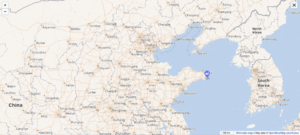


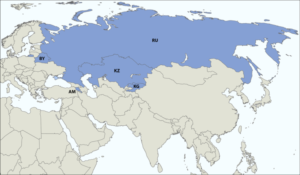

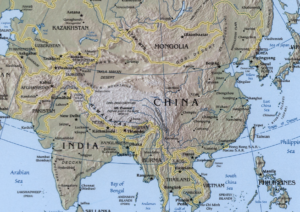















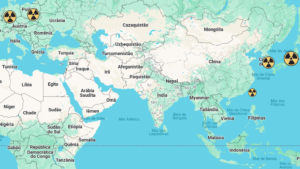

[…] Brussels Effect concerns the unilateral power of the European Union to regulate global markets in an indirect way, and not through international institutions or by […]
[…] the European Chips Act, the EU aims to address semiconductor shortages and strengthen Europe’s technological […]